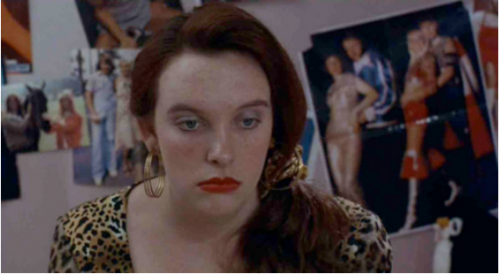This is a guest post by Cat Papadimitriou.
A good friend of mine does an uncanny impression of me: he waits a moment to respond to something, and finally says “Well, yes, and no.” It’s true that I never have a one word answer for anything.
A useful piece of advice I received as a screenwriter was to make my main character proactive. If my lead was willful and had a clear goal, I would have no problem following them through their own actions to achieve, or not achieve, that goal. This was useful insofar as it allowed me to finally complete a script. With just a little finagling the plot points unfolded in all the right places and things made good sense. But naturally, I was therefore incapable of writing anything remotely true to my own life experience.
I had this film in my head about a girl who had a painfully pressing urge both towards and away from things she could not identify. For months I lived in the colors, sounds and smells of the world of this film, and with the feelings she had. But for the love of God I could not make this chick DO anything!
I decided to re-watch a few of my favorite films and play “spot the goal.”

Muriel’s Wedding. OK, Muriel wants to get married. And the events that propel the film forward are in fact brought on by her own actions. But she isn’t really acting on her desire to be married. She’s acting on her desire to avoid everything that reminds her that she’s not. It’s more a film about low self-esteem and disappointment in life than it is a film about a girl who only wants to be a bride.
In Trainspotting, the first thing Renton declares is that he is going clean. There’s a clear goal! Except that goal is one he acts on by shooting up “one last time.” Before the film is halfway through he has gone through withdrawal and started using all over again. As soon as I’m asking myself, “was quitting the goal?” he is floored by the presence of Diane at a nightclub, and is on a quest for love. But that is short-lived as well. Renton seems to hop all over the place trying to figure out what he wants, and that’s part of what makes the film so engaging; his desires change constantly. He wants one thing one moment, but life has another in store. We’re not bored by his lack of conviction, we’re enthralled by his thought process through it all.

So I tried to get to know this Nia girl living in my head. When I met her, she didn’t really want anything. And when I went down the list, “do you want to graduate college?” “Do you want a better relationship with your mom?” and so on, the answer was always “Well… yes and no.” So I let her act, or not act, on the yes and the no.
I let her inner conflict steer the film, and a cool thing happened. The drama came FROM her, and not as a result of her.
Contrary to what I was warned, Nia wasn’t wishy-washy. That’s not what being ambivalent is. It’s about being conflicted. And I found that Nia’s choices were much more interesting, spontaneous, and genuine when she was acting somewhat in spite of herself. She was surprising me. As in real life, she was not really affecting the world around her in any tremendous way. Life was going on, as it does, and she was the one changing. There were larger things at play than what Nia might have wanted.

I’m an atheist, by the way. Not because I am 100 percent positive that when I die my consciousness as Cat also ends. I believe this, but I also know that it is only a belief. We’re all agnostic by default. Ambivalence is the awareness that a single truth can encompass conflicting ideas—yes and no. Nothing is black or white. It’s usually black and white. Not so much grey, but checkerboard, or perhaps herringbone.
And the films I tend to gravitate toward are the ones that represent life, and people, in this way—truthfully.
Was the advice I got as a screenwriter good advice? You guessed it. Yes, and no.
If we’re not following actions taken by the main character, well, he or she is not the main character. But whether those actions are towards any one specific goal, or whether there is any awareness of a goal at all, is, I think, optional. Just think of all the amazing films we would be writing off if it wasn’t.

Where is young Anton going in The 400 Blows? Or Benjamin Braddock, in The Graduate? All that’s really clear is that they both want something else.
It takes Guido, in Federico Fellini’s 8 ½, over 75 percent of the film to admit that he wants nothing more but to make one honest film, and to look at his wife without shame. Yet we are enraptured as we watch him half-heartedly muddling through the production of his current film project. We’re not really watching the film he’s supposed to be making. We’re seeing his heart where it really is: in the past, in longing, in his understanding of himself, as it unfolds.
Cat Papadimitriou is a Bronx born Brooklyn based filmmaker and story-teller devoted to telling stories of the under-represented. Her last film adventure abroad was as camera assistant and educator in a two woman crew on the project Fire in Our Hearts and she is currently working on her first feature narrative, Nia On Vacation. She is most proud of her cooking abilities.







